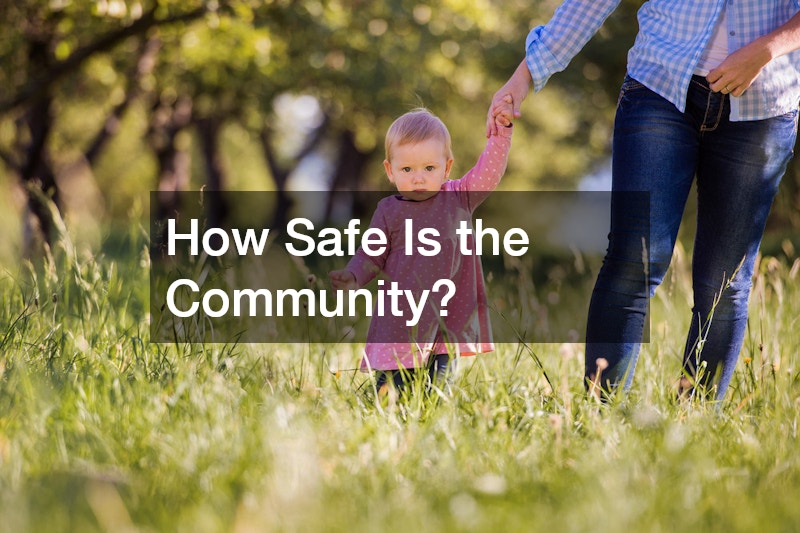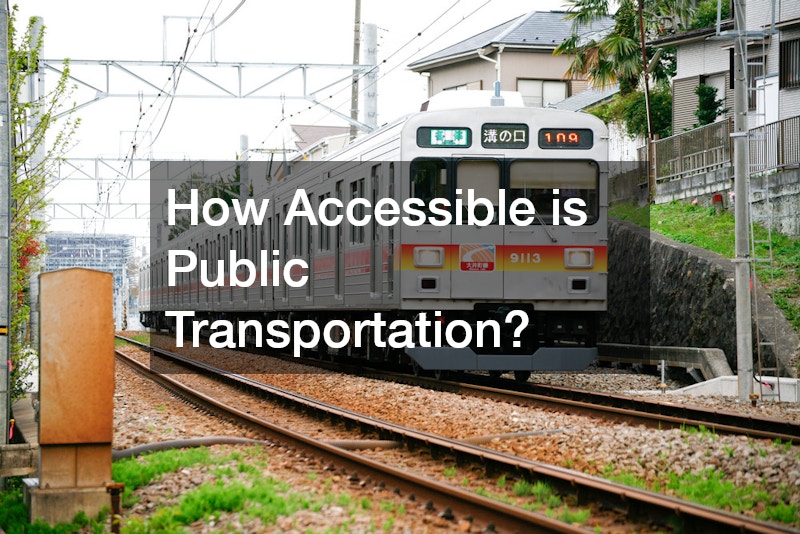Relocating with children is an intricate decision that goes beyond choosing a new house—it’s about finding a community that offers a safe, nurturing, and enriching environment. Families seek community elements that foster growth, security, and social connectivity to ensure their children thrive. This guide explores the essential factors families should assess in their search, focusing on various community elements that support and enhance family life.
Parents relocating with children have unique priorities, from educational resources and recreational options to healthcare, safety, and social engagement. A well-chosen community can offer children a healthy environment, inspiring opportunities, and meaningful friendships, contributing to a more enriching family experience. Let’s delve into these essential elements to consider when seeking an ideal community.
1. What Educational Opportunities Are Available?
Education is a top priority when relocating with children. Parents seek communities with robust educational systems that meet their children’s academic, extracurricular, and social needs.
1.1. Public School Systems
A good public school system offers quality education with accessible resources and well-trained teachers. When evaluating school systems, consider school ratings, teacher-to-student ratios, and available extracurricular programs that encourage well-rounded development.
1.2. Private and Charter Schools
Private and charter schools provide alternative educational options. These institutions often have smaller class sizes, unique curricula, and specialized programs, giving families flexibility in choosing an educational approach that best suits their child’s needs.
1.3. Extracurricular Programs
From sports leagues to art classes, a strong extracurricular program is an essential community element. Access to quality sports facilities, like artificial turf installations, arts programs, and music lessons, allows children to explore interests beyond academics, fostering social skills and physical development.
1.4. Access to Libraries and Educational Resources
Libraries and other educational resources are invaluable for children’s intellectual growth. Communities with libraries offering programs like summer reading challenges, tutoring sessions, and cultural events create rich educational experiences that inspire lifelong learning.
1.5. Special Education Services
Families with children requiring special education services prioritize communities that offer robust support programs, including individualized learning plans, therapy services, and adaptive learning opportunities. These resources help ensure all children have the chance to succeed academically and socially.
2. How Safe Is the Community?
Safety is a cornerstone of a thriving family community. The right neighborhood offers a secure environment where children can freely explore and parents feel at ease.

2.1. Crime Rates and Law Enforcement
Low crime rates and responsive law enforcement are significant indicators of safety. A community with a well-organized police department and low crime rate fosters peace of mind and security.
2.2. Community Watch Programs
Community watch programs promote neighborhood safety and foster closer relationships among residents. These programs often collaborate with local law enforcement to keep crime rates low, making it a vital community element for families.
2.3. Child-Friendly Public Spaces
Public spaces like parks and playgrounds provide children with safe areas to play, socialize, and engage in physical activities. Communities with clean, well-maintained parks encourage children to interact, creating a positive social environment.
2.4. Emergency Services Availability
Proximity to emergency services, including hospitals and animal hospitals, ensures families have immediate access to help in case of medical or other urgent needs. Families benefit from knowing essential services are just minutes away.
2.5. Neighborhood Lighting and Infrastructure
A well-lit neighborhood with updated infrastructure creates a safe, accessible environment. Reliable street lighting and quality roads and sidewalks are practical factors that enhance a sense of security and support safe outdoor activities.
3. What is the Quality of Local Healthcare Facilities?
Healthcare is a crucial consideration for families, ensuring children’s health needs are met in both routine and emergency situations.
3.1. Pediatric Care Services
Pediatric care services are essential for families, as children require specialized care throughout their development. Communities with experienced pediatricians and specialized clinics provide reassurance that quality care is accessible.
3.2. Proximity to Hospitals
Access to hospitals and animal hospitals, as well as urgent care facilities nearby can be a deciding factor for families. In an emergency, close proximity to healthcare can make a significant difference in care response times.
3.3. Mental Health Resources
Mental health resources, including counselors and therapists, are valuable assets in communities that care about overall well-being. Access to mental health services supports families and helps children manage school-related stress and personal challenges.
3.4. Specialized Medical Services
Some families require access to specialized medical services, like allergy and immunology clinics or massage therapy clinics. Communities that offer these services meet a wider range of health needs, making them more family-friendly.
3.5. Community Health Initiatives
Community health initiatives, like vaccination drives and wellness programs, demonstrate a community’s commitment to public health. Families also benefit from nearby childcare centers that offer a safe and enriching environment for young children.
4. Are There Recreational Activities for Children?
Recreational options contribute to a balanced lifestyle by encouraging kids to explore, play, and learn.
4.1. Parks and Playgrounds
Parks and playgrounds with well-maintained facilities allow children to enjoy outdoor activities safely. Communities with ample green space and playground equipment foster a positive and healthy environment for families.
4.2. Youth Sports Leagues
Youth sports leagues encourage teamwork, fitness, and a sense of community. Many families prioritize communities that provide a range of youth leagues and well-maintained fields, often with artificial turf installations that enhance the playing experience.
4.3. Arts and Culture Events
Events such as art fairs, theater performances, and festivals enrich the cultural landscape of a community, giving children exposure to creative outlets and diverse perspectives.
4.4. Nature Trails and Outdoor Exploration
Nature trails, hiking paths, and other outdoor amenities allow children and families to connect with nature. Communities that emphasize conservation and outdoor exploration provide opportunities for learning and physical activity.
4.5. Public Pools and Recreation Centers
Public pools, especially those with inground pool options, offer safe places for children to swim and stay active. Recreation centers, with indoor and outdoor options, are invaluable assets for year-round activities.
5. How Accessible is Public Transportation?
Efficient public transportation supports families’ mobility and ensures children can reach schools, parks, and activities.

5.1. School Bus Routes
Proximity to school bus routes is essential for convenience and safety. Reliable school transportation systems provide families with an efficient means to get children to and from school.
5.2. Public Transit Options
Public transit provides flexibility for parents and teens. Accessible transit options, like buses and trains, make it easier for families to navigate daily routines and encourage independence as children grow older.
5.3. Bike-Friendliness
Bike-friendly communities, with dedicated lanes and bike-sharing programs, offer a safe, eco-friendly alternative for short commutes and leisure rides.
5.4. Walking Paths and Sidewalks
Walkable neighborhoods with pedestrian-friendly sidewalks improve accessibility to local amenities, parks, and schools. Safe walking paths are particularly valuable to families with young children.
5.5. Senior and Disabled Transport Services
Transportation services for seniors and disabled residents enhance a community’s inclusivity, making it possible for people of all abilities to engage in local life.
6. What Cultural and Social Experiences are Offered?
Cultural diversity and social activities are vital community elements that shape children’s understanding of the world.6.1. Community Centers and Clubs
Community centers serve as social hubs where families can connect through activities, clubs, and events. These centers often provide opportunities for kids to join programs and for parents to meet others in the area.
6.2. Local Festivals and Fairs
Festivals and fairs reflect a community’s unique culture and values. Seasonal events bring families together, providing children with memorable experiences and a sense of belonging.
6.3. Diversity and Inclusion Initiatives
Communities that prioritize diversity and inclusion create an environment where children can learn respect and empathy. Exposure to different backgrounds and cultures broadens perspectives and fosters understanding.
6.4. Art Galleries and Museums
Galleries and museums provide educational experiences, introducing children to history, art, and science. Communities with these amenities offer enriching opportunities for learning and exploration.
6.5. Music and Performance Venues
Music venues and theaters support artistic expression and inspire creativity. Exposure to performing arts can spark an interest in music, drama, and other creative pursuits.
7. How Supportive is the Local Economy?
A community with a strong economy offers stability and opportunities that benefit families.

7.1. Employment Opportunities
Access to job opportunities is a critical factor for families. Proximity to businesses, retail construction sites, and other industries ensures economic stability and growth potential.
7.2. Cost of Living
An affordable cost of living makes daily life manageable, providing financial security for families. Communities with affordable housing, groceries, and healthcare allow parents to support their children’s needs comfortably.
7.3. Small Business Support
Support for small businesses creates a unique community character. Thriving local businesses provide jobs, while retail construction and development stimulate economic growth.
7.4. Marketplaces and Shopping Centers
Marketplaces and shopping centers with diverse options offer convenience for families. Accessible shopping supports local businesses and makes it easy for families to obtain necessary goods.
7.5. Economic Growth Trends
Growing communities, particularly those with new construction services, indicate stability and opportunities. A vibrant local economy is an indicator of a thriving area, making it appealing for families.
8. What is the Community’s Environmental Quality?
Environmental factors impact quality of life. Families look for clean air, green spaces, and eco-friendly practices.8.1. Air and Water Quality
Good air and water quality are vital for children’s health. Communities committed to clean environments promote a healthier lifestyle for families.
8.2. Green Spaces and Conservation Efforts
Green spaces foster community connection and ecological awareness. Communities that value conservation maintain natural beauty and provide children with areas to explore nature.
8.3. Recycling and Waste Management Programs
Recycling programs reflect a community’s commitment to environmental stewardship. Accessible recycling and waste management help keep neighborhoods clean.
8.4. Community Gardens and Green Initiatives
Community gardens offer educational opportunities about sustainability. Gardening teaches children about food, ecosystems, and the importance of nurturing the environment.
8.5. Impact of Climate Change on Area
Families should assess climate resilience when considering a new location. Fence contractors and eco-friendly builders often play a role in creating durable, sustainable homes suited for changing climates.
9. Are There Opportunities for Community Engagement?
Engaging in community activities fosters a strong sense of belonging and shared values.

9.1. Volunteer Programs
Volunteer opportunities allow families to contribute to the community’s well-being. Parents and children benefit from giving back and learning the importance of service.
9.2. Neighborhood Associations
Neighborhood associations build unity among residents. These groups organize events, keep families informed, and create a welcoming environment.
9.3. Community Events and Gatherings
Events and gatherings create a family-friendly atmosphere, allowing parents and children to meet neighbors and build relationships.
9.4. Advocacy and Social Justice Groups
Social justice groups encourage civic engagement. By supporting advocacy, families can contribute to meaningful change.
9.5. Public Forums and Town Meetings
Forums and meetings provide transparency in local decision-making. Involved residents have the chance to influence policies, enhancing community trust and inclusiveness.
10. What Housing Options are Available?
Housing quality and variety impact a family’s comfort and security.
10.1. Family-Friendly Neighborhoods
Family-friendly neighborhoods offer safety and convenience, along with nearby family entertainment options that foster fun and relaxation.
10.2. Market Rent and Home Prices
Affordable housing options help families budget effectively. Evaluating rent and home prices allows families to make informed decisions.
10.3. Housing Types and Availability
Diverse housing types, such as townhomes and single-family homes, let families choose based on their needs. Access to new construction services adds to this flexibility, offering custom and modern housing options.
10.4. Proximity to Schools and Amenities
Proximity to schools, parks, and amenities streamlines daily life for families. For instance, being near a local game store offers a convenient entertainment option for children and teens.
10.5. Trends in Real Estate Market
Stable or appreciating property values suggest a healthy market. Communities with robust real estate trends are often more appealing for long-term settlement.
Selecting a community with children involves evaluating many community elements to create a supportive environment. By considering educational options, safety, healthcare, recreation, cultural activities, and more, families can find a community that not only meets their needs but fosters happiness and growth. Taking time to explore these aspects helps parents choose a community that nurtures family life and enables children to flourish.
Ultimately, the right community provides a foundation for positive development, meaningful relationships, and enriching experiences that support children’s well-being. A thoughtful evaluation of these factors ensures families find a place where they feel connected, safe, and empowered, enhancing both present family life and future opportunities for children.